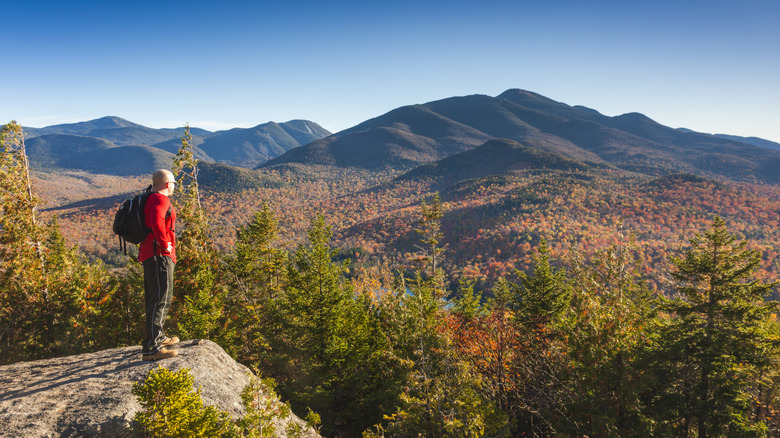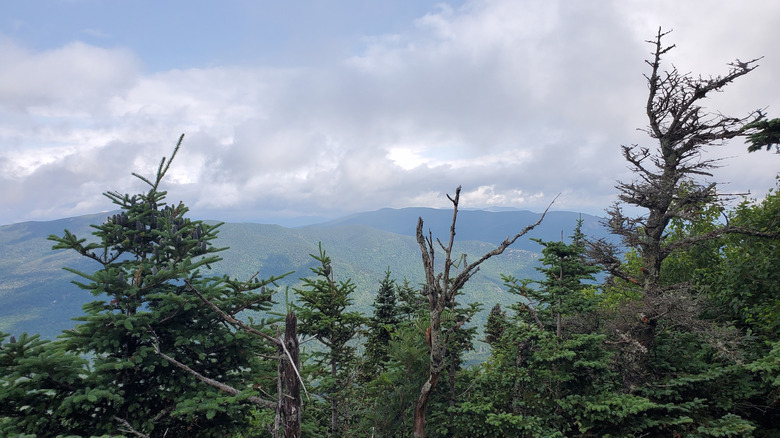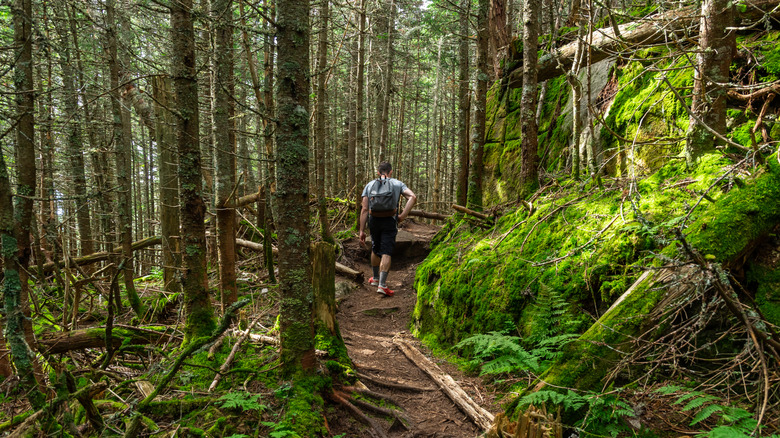Walk Through The Adirondacks' Hidden 'Pavement Barrens' For A Surreal Eco-System With Desert Vibes
New York's awe-inspiring Adirondack Mountains are known for snowy peaks and chilly lakes, but they are also home to a unique ecosystem known as sandstone pavement barrens. In these fascinating spots, gaps in the carpets of shrubbery reveal sections of hard, flat sandstone, like a natural pavement. While you might associate the Adirondacks with crystal waters and majestic forests, this landscape is surprisingly arid and hot in the warmer months, making it closer to a mossy desert than you might expect to find north of New York City.
While there are a number of examples of pavement barrens around New York, the most impressive ones are in Gadway Sandstone Pavement Barrens Preserve and the aptly named Flat Rock State Forest. Like a lot of the landscapes in the Adirondacks, the pavement barrens come from the ancient movements of titanic glaciers. A melting glacier caused massive flooding. In the regions that are now pavement barrens, that flooding washed away the soil and plant life, leaving nothing but bedrock behind. That stone is still exposed today, 12,000 years later.
Explore a unique landscape that is an ecosystem of its own
The pavement barrens make for bird watching destinations, and are some of the best parks to visit if you want to avoid crowds and admire wildlife. That is because the unique landscape brings together plants and animals, from rare wildflowers to coyotes, that you can spot while you explore one of the most unique landscapes in the Adirondacks. Water is a fundamental part of this otherwise arid landscape. The rock at the pavement barrens is generally flat, but it still has ridges and cracks. When it rains, water pools in those divots, creating habitats for plants that would typically live in wetlands and bogs, not on rocky mountain sides.
The landscape of the pavement barrens was created by flooding, but it has been perfected by fire. The area is already prone to fires caused by lightning strikes, which has made them the perfect environment for Jack pine groves, which require burning hot temperatures to open their pinecones and release their seeds, to spring up around them. Its natural heat has also historically allowed berry bushes like blueberries to thrive here — something the people who lived in the Adirondacks long ago understood, leading the indigenous peoples of the area to do controlled burns around the barrens to encourage the berry growth you will still see there today.
How to visit the pavement barrens
If you want to visit the pavement barrens for yourself, you can't go wrong with a trip to Gadway Sandstone Pavement Barrens Preserve. There is an access road and a parking lot that explorers can use, but be warned — this is a rugged route. You're going to want to take an all-wheel drive vehicle if you have the option to. Once you're inside, you're asked to walk only on the trails to protect the rare ecosystem, but luckily there are many options to choose from, so you shouldn't feel too restricted by having to stick to the paths.
When you spot the exposed bedrock, crouch down and put your palm over the stone — but don't touch it unless it's a cloudy day! You will be astounded by just how hot the rock becomes in the sunshine. The sandstone is often more than 100 degrees fahrenheit.


